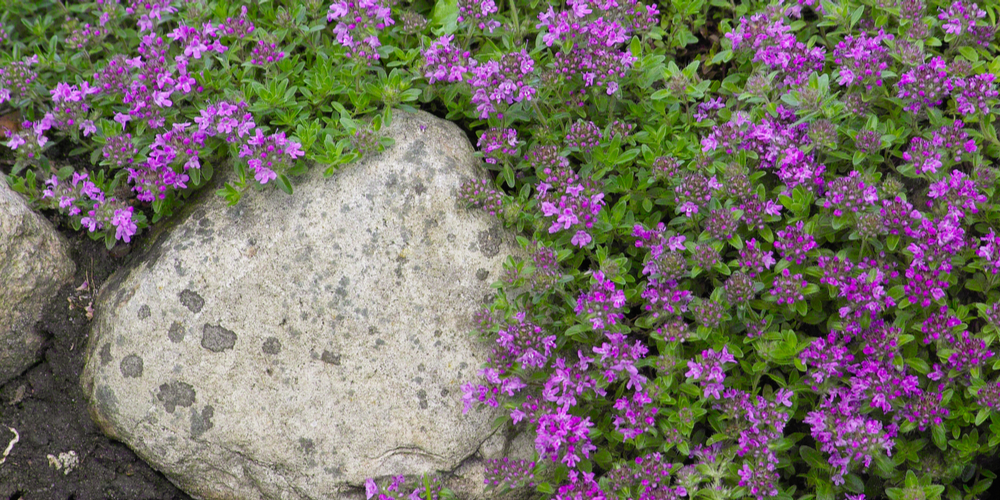

Remember during the first year, any new plantings will require weeding and mulching, but once established, little care is needed. Once seedlings are grown, thin out to 30cm (12in) apart. Water well and continue to water especially through hot periods. Press the seeds lightly into the soil, but do not cover. It may help to mix the fine seed with sand to get more even distribution. Remove weeds and stones and rake to a fine tilth.īroadcast the seed over the planting area. You only need to prepare the soil 15 to 25cm (6 to 10in) deep. Mix them about 50% with your existing soil. Peat moss, processed manure, and compost (if available) are excellent soil additives. Prepare the planting area by mixing generous quantities of organic humus into the soil. Plant 30cm (12in) apart.įor small areas, you may get good results from direct sowing. When transplanting pinch out the tip of each stem to encourage the plants to bush outwards.
#White creeping thyme seeds full#
For best results, provide any ordinary, well-drained soil in full sun Gradually acclimatise to outdoor conditions for 10 to15 days before planting out after all risk of frost. When large enough to handle, transplant seedlings into 7.5cm (3in) pots to grow on. Once some of the seeds have germinated air should be admitted gradually. Cover the container with a piece of glass or clear plastic and leave in a position which receives diffused light. Do not cover as they need light to germinate. Sow seed on the surface of lightly firmed, moist seed compost in pots or trays. We would strongly recommend that for anything but the smallest areas, seeds are started in trays and sown out as plug plants. Seeds can be sown indoors in late winter to spring or in autumn at temperatures around 13☌ (55☏) or they can be sown directly into the garden between May and August. Sowing: Sow in Spring or Autumn at around 13☌ (55☏) A versatile, low maintenance groundcover, its uses in the garden are almost unlimited. Its leaves can be used as a culinary herb and the flowers are very attractive to bees and butterflies. It tolerates many soil types, including heavy clay. It is especially popular to use in spots where the plants can cascade over a rockery or wall.Ĭreeping thyme is an easy plant to maintain, it does not tend to take-over and can easily be confined to a specific area. It can be used in borders where it is an excellent ground cover between taller plants. When you step on them they emit a lovely fragrance.īecause of its low growth habit this diminutive Thyme can be used effectively in the foreground of just about any planting in the landscape. Hardy to -34☌ (-30☏) with good drought tolerance, these low maintenance plants don’t require mowing, watering or care, and can take a lot of abuse. It is suitable as a lawn substitute in small areas, an ideal ground cover to use between stepping stones or near to patios and walkways. There are very few ground covers that can be walked-on, but creeping thyme is one of them. The leaves are very small, but dense and cover the low growing plants.īlooming from May through to August with clusters of flowers in shades of purple-violet, the plants flower so prolifically, you can hardly see the evergreen leaves below. One of the best low growing ground covers, Thymus serpyllum forms evergreen dense cushions The stems creep along the ground rather than rise vertically and grow up to 30cm (12in) long.


 0 kommentar(er)
0 kommentar(er)
